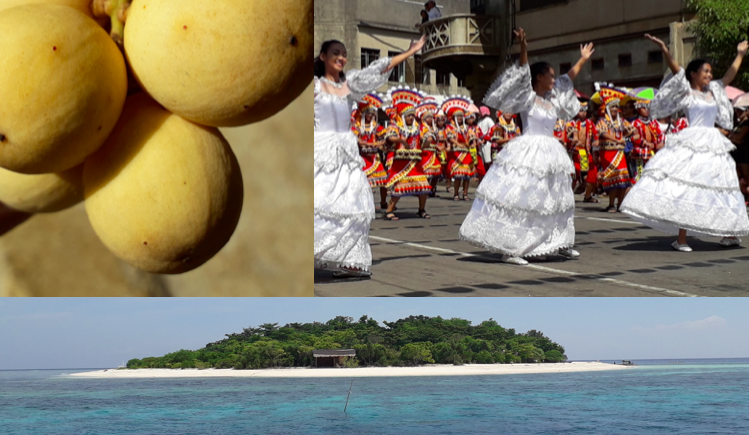
As well as its pristine beaches and the towering Mount Hibok-Hibok, a big draw to Camiguin Island are its delicious lanzones.
This pebble-like fruit, with its sweet and tangy flesh, is everywhere on the island — as a welcome offering in hotels or even as decorations in homes.
Every year, tourists flock to the island — often described as “born out of fire” — to join the Lanzones Festival celebrated in gratitude for a bountiful harvest.
While also abundant in some other parts of the country, Camiguin lanzones are said to be the sweetest of all due to the island’s rich volcanic soils.
For the first time this year, Camiguin is opening the gates of a lanzones farm to tourists who want to pick their fruits directly from the tree.
The farm in Mahinog has more than 800 trees that grow up to 80,000 kilos of the fruit every year.
An entrance fee of 200 pesos allows for a full day of unlimited picking and eating inside the 6.9-hectare plantation.
Since lanzones is a seasonal fruit, tourists who want a taste of it are advised to book for flights and hotels from September to November.
Still, the best time to visit is on the second half of October, where the Lanzones Festival is held.
Lanzones legend
Part of the festival involves the retelling of the tale of Buahanan — the local name of lanzones — in the form of dance.
According to the legend, two children followed a hornbill into the forest not knowing that it was the Tagbusaw, an evil creature that preys on children.
Hearing this, the Manobo, the original settlers of Camiguin, performed rituals for the children’s release, but to no avail — and the monster was only angered further.
Left with no other recourse, the tribesmen, through their meriko (ritualist), sought the help of diwatas. These fairies gave the village folk a bunch of golden fruits — buahanan — and told them to give it as offering to Tagbusaw.
Tagbusaw accepted the fruits and released the children. A folk tale or not, the fruit is still considere a blessing for the people of the island.
Mambajao Mayor Jurdin Jesus Romualdez said with Camiguin lanzones in demand in Mindanao and Cebu, the supply is sometimes too depleted to even reach Manila, let alone abroad.
Camiguin paradise for dive, food, scenery
With its inviting beaches and mountain paths, Camiguin is perfect for tourists seeking tropical paradise.
There are also some great places to stay, and you won’t have a hard time finding good food to match all tastes.
For example, there is the newly opened La Dolce Vita, owned by Italian Alessandro Cucchi, offering homemade pizza and pastas, and the Guerrera Rice Paddy Restaurant with its own take on “fine Asian street food”.
On your way to Tuasan Falls, a few miles from the Sunken Cemetery and Old Church Ruins in Catarman, a rustic coffee shop in the middle of the woods is another unexpected treat.
There is also the Beehive Driftwood Cafe, owned by a Belgian, with great food and homegrown coffee.
But if you hanker a bit of a countryside taste, J & A Fishpen’s floating restaurant offers the bounties of the sea served up in traditional clay pots.
It also offers Surol, a Camiguin chicken dish flavoured with coconut milk and ginger.
For the more adventurous, fresh sea urchin cooked in vinegar should not be missed. These can be bought from vendors on almost any street, and also on the uninhabited Medan Island.
Often called White Island, this sandbar is the perfect place to photograph Mount Hibok-hibok and Old Vulcan in a single picture.
Finally, a boat-ride to Mantigue Island is the perfect last-day trip to cap off your Camiguin tour. The island destination, fringed with vegetation, is one of the 19 recommended diving spots in the province.
Follow our Facebook page for daily news updates
…
